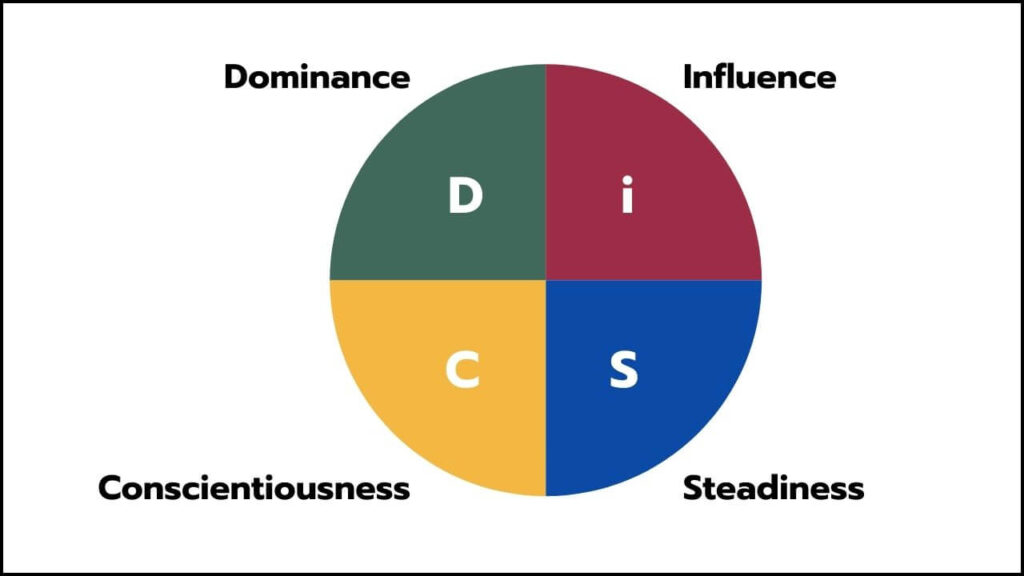When I was a teacher, I was trained in learning styles. Some people learn best by reading or seeing visuals. Others prefer to listen. And some of us need hands-on activities — like cutting up a pizza to practice fractions.
Just as knowing your learning style can help you succeed as a student, understanding your DiSC style can help you succeed as a leader and manager.
The DiSC model identifies 12 behavioral styles based on 4 main “slices”—Dominance (D), Influence (i), Steadiness (S), and Conscientiousness (C)—each with unique strengths, motivators, and work habits. Recognizing your style allows you to lean into your strengths while adapting to your team members’ needs.

Learn about yourself through your DiSC style.
When you are aware of your DiSC style, you can identify what motivates you. You better understand your priorities in the workplace, and the activities and work methods you habitually lean toward.
It helps you unravel the mystery of why you do certain things in certain ways. You get why some activities feel draining while others are energizing.
For example, I am an “i” style, which is evident in the activities I enjoy and do well:
- Listening to the hopes and dreams of others and seeing it as a potential reality.
- Creating a fun, engaging atmosphere in workshops and team-building events.
- Getting people excited about new possibilities and moving toward their goals.
The tradeoff is that I’m not a big fan of the detail-oriented work needed to create that reality in earnest.
Luckily, I know this about myself and have a great team around me, including people who are excited to take on the things that siphon my energy. We complement each other and can collaborate in ways that make seemingly crazy possibilities a reality.
Before I understood my DiSC strengths and challenges, I struggled with those draining day-to-day tasks. Now, I can shape my schedule so that I’m regularly collaborating with and inspiring those around me. I also look for ways to tie the repetitive tasks to my motivators and priorities.
But learning about your own DiSC style is just the beginning.
The ability to consider the personality styles, communication preferences, and motivations of others on your team is the key to being an effective leader.
Understand how to adjust to your employees’ styles.
Once you understand your own DiSC style, you can build awareness of other styles and the intricacies of how they relate and interact.
By knowing my team members’ DiSC styles, I make sure each person has what they need to be successful.
For example, I like a quick pace and collaborative environment, but my “S” style colleagues don’t like to feel rushed and my “C” style colleagues value independent time to gather facts and analyze ideas. And our “D” style colleagues may want to skip socializing and get straight to the point.
In adapting to the styles of those I interact with, I can foster great communication and a high-performing team — and, ultimately, that lights me up.
So, what can you do to be sure your team members feel listened to and supported?
Take time to understand their styles, priorities, and motivations.
The DiSC model is a helpful tool for building this understanding, which is why we use it in our manager development course and other programs. If you’d like help using the model in your own organization, let us know.
In coming weeks, we’ll dive deeper into how to lean into your DiSC style and the awareness of the styles of those around you to become a better leader for your team.
Matthew Cosgrove is an Everything DiSC® Certified Practitioner, Bloom Growth Coach, and professional facilitator with a passion for building trust and effective communication across organizations. With expertise in business systems, education, and team development, he partners with mission-driven leaders to create sustainable growth and long-term success. With a light-hearted, approachable style, Matthew creates a safe environment where people feel comfortable engaging and learning, even when navigating complex challenges.